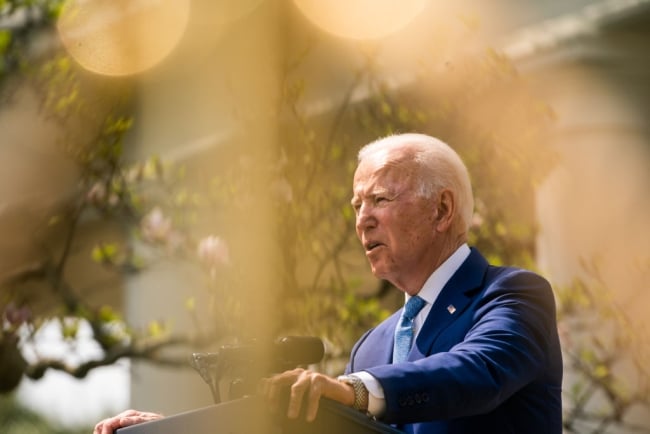You have /5 articles left.
Sign up for a free account or log in.

President Biden
Demetrius Freeman/The Washington Post/Getty Images
President Biden has released his request to the Senate for fiscal year 2022 discretionary funding, also known as the “skinny budget,” because details will follow. The document requests several funding increases for higher education. If enacted, the plan would:
- Increase Pell Grants: An additional $3 billion would go toward funding federal Pell Grants, increasing the maximum award by $400 -- the largest one-time increase in more than a decade. (The current maximum is $6,495.) Dreamers, immigrants brought by their parents to the United States without permission as children, would also be eligible for the grants. Biden says the funding is part of a larger effort to double the maximum Pell award.
- Increase Education Department funding: The plan increases funding to the Education Department by nearly $30 billion, or 41 percent of the previous year’s budget level. Total funding would be $102.8 billion.
- Increase funding for the NSF: The request includes $10.2 billion for the National Science Foundation, a $1.7 billion -- 20 percent -- increase from the 2021 level.
- Support for minority-serving institutions: The plan calls for an additional $600 million for historically Black colleges and universities, tribal colleges and universities, and other minority-serving institutions, as well as “low-resourced institutions,” including community colleges.
- Upgrade STEM paths at minority-serving institutions: The request increases research funding opportunities at HBCUs and minority-serving institutions, while also investing in their lab and IT infrastructure. The plan would additionally fund workforce development programs in STEM at those institutions.
- Fund women's programs at minority-serving institutions: The plan gives $1 billion to the Department of Justice for Violence Against Women Act programs, including funding to support women at HBCUs, Hispanic-serving institutions and tribal colleges, “to ensure these institutions have the same resources as other schools to address this pervasive issue.”
- Fund renewables at tribal colleges: The plan calls for $450 million to facilitate climate mitigation and resilience projects in Indian country, including “investment to begin the process of transitioning tribal colleges to renewable energy.”
- Attract minority students to STEM: The request provides a $20 million increase for the Office of STEM Engagement to “expand initiatives to attract and retain underserved and underrepresented students in engineering and other STEM fields, in partnership with minority serving institutions and other higher education institutions.” The increase would be 16 percent of the current enacted budget for those initiatives.
The plan requires congressional approval.




